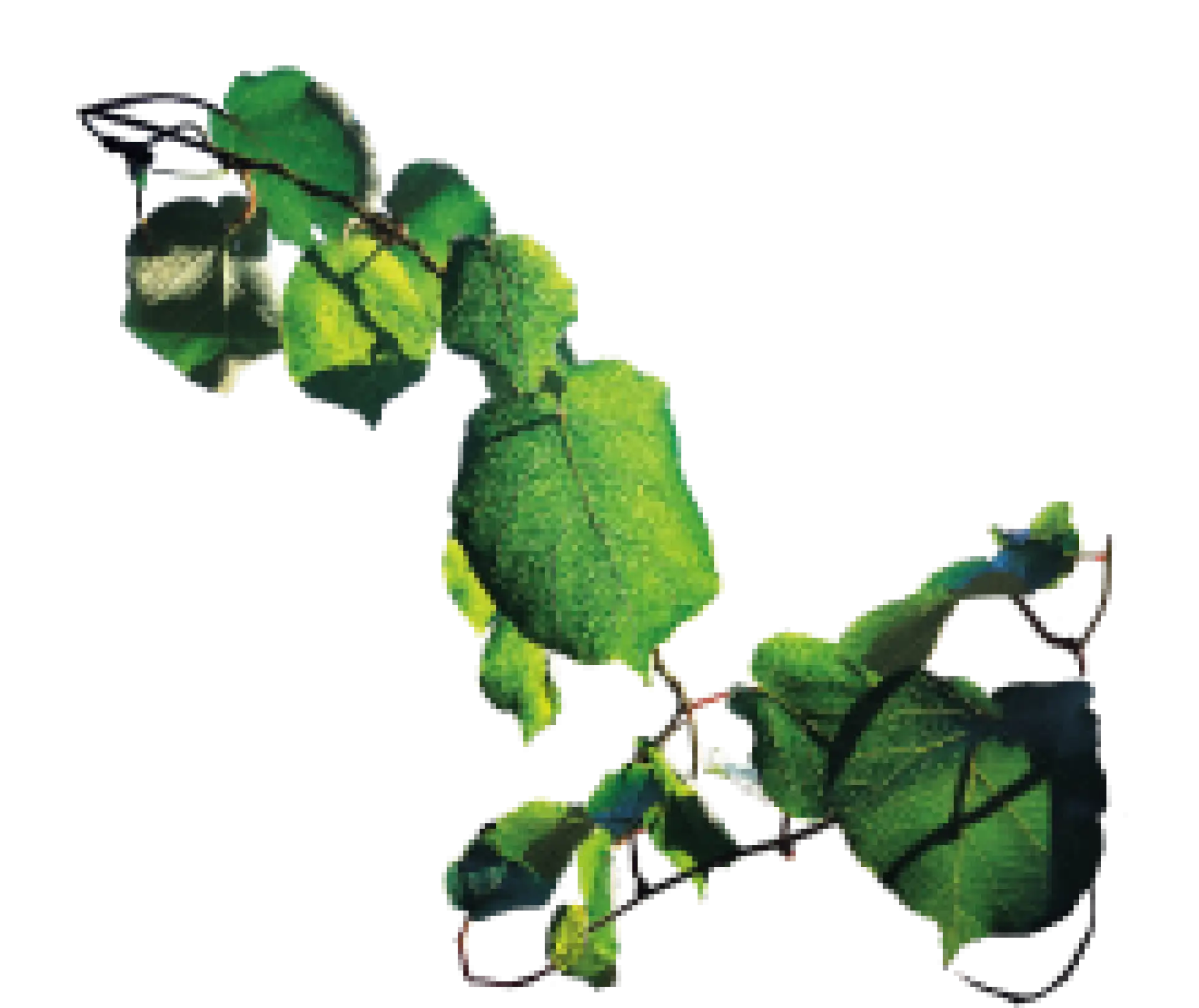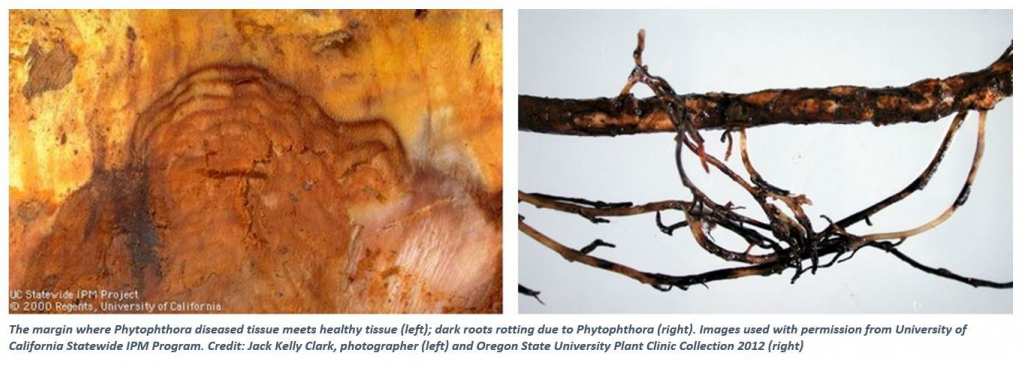Seen something unusual? MAKE A REPORT
Seen something unusual? MAKE A REPORT

Phytophthora is present around the world, including New Zealand, in a wide range of hosts. There are over 100 known species of Phytophthora, with thoughts there could be up to 500 more yet to be identified.
There are many reports of different Phytophthora damaging kiwifruit vines in different regions globally, such as P.drechsleri, which has caused significant impacts to the kiwifruit industry in Korea.
It is considered highly likely that under certain conditions (i.e. wet soils) kiwifruit would be susceptible to several Phytophthora species. Predicting which species will impact which cultivars, and under what conditions, is difficult if not impossible to predict. Because of this, KVH is undertaking readiness planning and research for invasive Phytophthora species as a whole, as opposed to focusing on one specific species.
Pest ranking based on the KVH risk matrix
View risk matrixThe biosecurity threat of Phytophthora to the New Zealand kiwifruit industry is largely unknown. It could come from the introduction of a new Phytophthora species, or from a species already here that may not yet have been exposed to kiwifruit.
Management practices, cultivar susceptibility and the environment may also play key roles in any future outbreaks. Phytophthora are Oomycetes (or water moulds), so wet, soggy soils are an ideal environment for them to thrive. As such, low-lying land, poorly drained orchards and additional irrigation are more susceptible to infection.
One of the difficulties with detecting Phytophthora disease symptoms is that they are variable and often are not distinct from those resulting from other plant pathogens (such as Armillaria root rot which can sometimes be misdiagnosed as Phytophthora root rot).
The other difficulty with Phytophthora symptom detection arises from asymptomatic plants, where the pathogen can lay dormant for long periods until conditions change and symptoms are expressed. There are many types of symptoms associated with Phytophthora species that may occur singly or in combination.
Phytophthora usually infects kiwifruit vines from root wounds or the root tips early in spring. During the warmer summer months, vines may rapidly decline or alternatively show gradual decline in productivity over several seasons. Symptoms include reduced shoot growth; small, chlorotic leaves; and an open canopy. Vines with the graft union below ground level or mechanically wounded trees are easily infected. Infected root and root crowns commonly show a red brown rot that is easily observed when cutting into the outer layer of tissue. Generally, there is observable margin where healthy, white tissue meets infected, discoloured tissue. Infected roots become dark and feeder roots are often black, decayed and few in number (see image below).

KVH investigates reports of unusual symptoms to identify and manage any biosecurity risks.
30 Jan 2025
Next in our series of team member introductions is Kerry O’Neil, our Monitoring & Compliance Officer. We started this series late last year to share more about the roles we have, and how each of us interact with you, our readers, and growers, in our day-to-day activities. I’ve been with KVH since December 2021 and day-to-day you’ll see me working with various people and groups across the industry to keep raising the bar and improve our biosecurity practices, organising various monitoring programmes, developing protocols, and ensuring compliance standards are met, so that we all continue managing biosecurity risks. I also audit pack-houses, kiwifruit processors, budwood suppliers, and pollen mills, and try to streamline these processes to keep them as quick and easy as possible for you. I quite enjoy helping nurseries wanting to join the Kiwifruit Plant Certification Scheme (KPCS) – especially working on their manuals, and organising sampling, testing, and external auditing. Before joining KVH, I worked at the Tauranga City Council in regulation and compliance, specifically with food and health registrations and alcohol licensing. Outside of work, I find it hard to say no to a round of golf. I travel a lot so next time I’m in your region I’d love to hear any local recommendations.
Read more30 Jan 2025
We look forward to seeing you at the upcoming Zespri Grower Roadshows. We’ll be speaking at each location, providing an update on the fruit fly response and industry biosecurity surveillance systems, including recent unusual symptom reports, alongside presentations from Zespri and NZKGI. The roadshows run 17 – 27 February and will all be held in person, with an option to join the Te Puke event online. Register here.
Read more30 Jan 2025
What am I? This week we have an image for you – can you guess the object? Our industry-led exotic stink bug surveillance system in the Bay of Plenty has kicked off again this year, thanks to industry organisations working alongside us, and as well as the standard sticky pheromone traps that have been used in previous years, some of the sites now also include one of these – an aerodynamic trap. These Brown Marmorated Stink Bug (BMSB) traps are shaped like a windvane which helps the pheromone travel further, attracting more stink bugs to the area. Originally trialled in kiwifruit in Italy through co-funding from the Zespri Biosecurity Innovation portfolio, it was exciting to see this research being implemented last year on a field visit with other members of the BMSB Council, and now we’ve got eight of our own as part of this year’s industry surveillance network at 14 sites – mainly pack-houses - from Mount Maunganui and Te Puke to Te Puna and Katikati. Our surveillance enhances nationwide efforts while raising awareness of stink bugs across the kiwifruit industry and providing practical, tangible monitoring activities. Importantly, it also builds capability within the industry for any stink bug response, whether that be specifically dedicated to kiwifruit or to assist in joint efforts involving other industries. The Ministry for Primary Industries (MPI) oversees the national BMSB surveillance programme, which operates on an entry risk basis, using lure traps and vegetation searches on a fortnightly basis during the high-risk season of September through to the end April each year. Most trapping efforts are concentrated in the main centres, primarily Auckland, Wellington, and Christchurch. Read more about BMSB, including latest detection data, here.
Read more